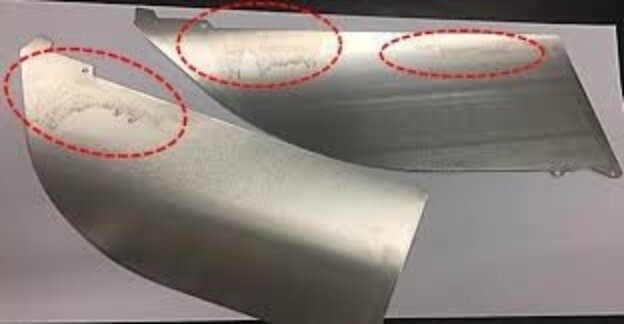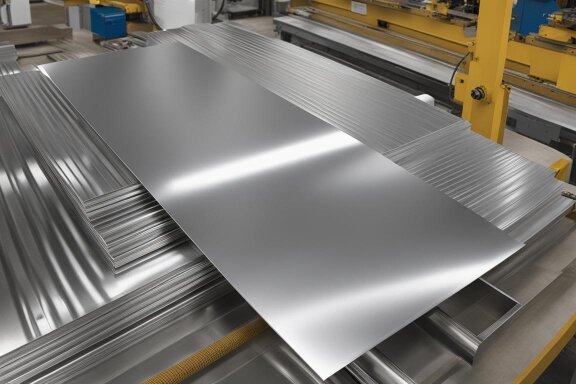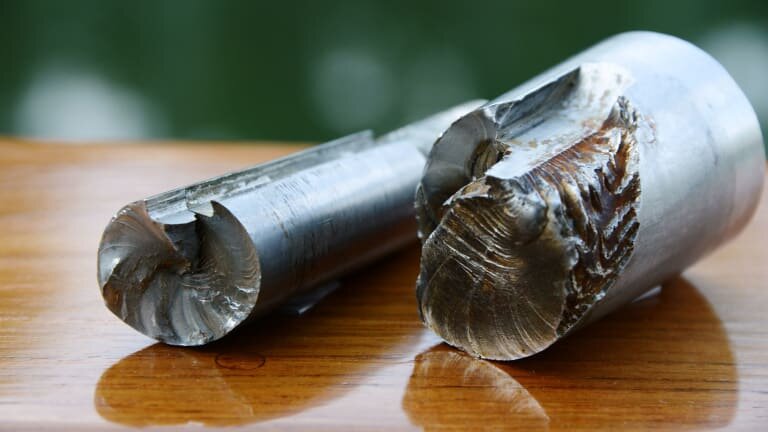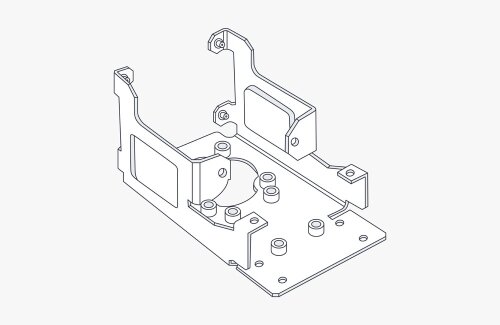Exploring the art of maximizing profits in custom sheet metal? Here’s my take on transforming your operations for better margins! Stay tuned for some valuable insights that could reshape your business strategy.
Focus on streamlining your production, optimizing material usage, increasing your market reach, adopting technology, upgrading your workforce, ensuring consistency in quality, managing your inventory efficiently, cultivating strong customer relationships, and continuously innovating and diversifying your offerings to boost profits. These strategies can help increase profitability in the highly competitive sheet metal industry by increasing productivity, reducing costs, and increasing customer satisfaction.
There’s a lot more under the hood regarding ramping up your profits. Let’s dive into the details and get your numbers soaring!
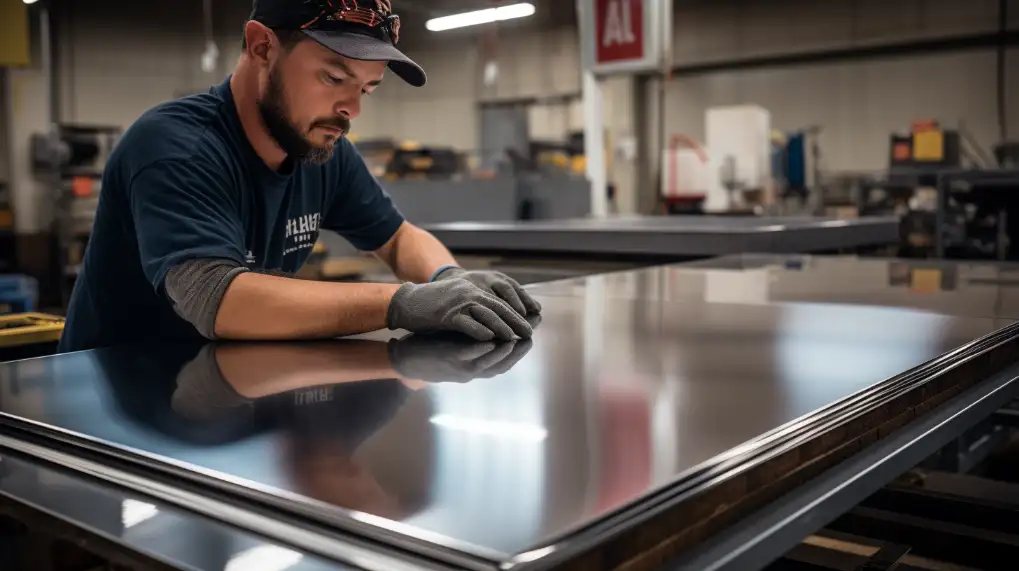
#1 Streamline Your Production Process
In the custom sheet metal business, streamlining your production is essential to boosting profits. Making your operation as efficient as possible and reducing waste is the key. You can use several strategies:
- Workflow analysis: Analyze your production workflow regularly to identify bottlenecks or inefficiencies. Understanding the flow and activity of the shop floor can be crucial. Rearranging machines and workstations can reduce movement and time.
- Adopt Lean Production Principles: Lean production maximizes productivity while minimizing waste. The 5S technique (Sort in order, Shine up, Standardize, and Sustain) helps organize the workplace by reducing time spent on non-value-adding tasks.
- Robotics and Automation: CNC (Computer Numerical Control), or automation, can improve speed and precision in the cutting, bending, and assembly of sheet metal. Robotics are used for repetitive and hazardous tasks. This allows skilled workers to focus on more complex production aspects.
- Preventive maintenance: Regular equipment maintenance ensures they operate efficiently and reduces unplanned downtime. A routine maintenance program will keep machinery in top condition and extend its life.
- Employee Engagement and Training: Well-trained employees are more efficient and make fewer errors. Regular training can keep employees up to date with the latest safety standards and techniques. Employees who are familiar with the workflow can provide innovative ideas.
- Quality Control: Implement strict quality control measures at various stages of the manufacturing process. It reduces costs and time for reworking or scrapping defective products.
- Supplier Relationship: Establish strong relationships with suppliers to ensure timely and cost-effective material supply. Consider purchasing in bulk or signing long-term contracts for reduced material costs.
#2 Optimize the material use
In the custom sheet metal business, material costs can significantly impact overall profitability. Here are some tips on how to reduce waste and maximize your material usage:
- Material requirements planning (MRP): Implement an MRP system for accurately forecasting demand and inventory control. It helps you order enough materials to meet your needs and reduce excess inventory, which can waste capital.
- Advanced Nesting Software for Cutting Patterns: This software optimizes the layout of components on a metal sheet, reducing waste by fitting parts together more tightly. The more efficiently you nest, the less material you waste.
- Reusing and Recycling Scrap: Some scrap will always be generated, even with the most efficient cutting. Set up a system to collect and recycle scrap metal. You may reuse some smaller pieces in smaller projects or sell them to recycling centers.
- High-Quality Materials: Although it may seem counterintuitive initially, investing in better materials will reduce waste over time. The better materials are often less defective, resulting in less scrap and rework.
- Supplier Management and Selection: Select suppliers carefully based on cost, quality, and reliability. Good relationships can lead to lower prices, more favorable terms, or discounts for bulk purchases. Consider the distance of your suppliers to reduce shipping costs and times.
- Upgrades to Technology and Equipment: Investing in modern machines that are more efficient and precise with materials is a wise investment. Modern machines are often more efficient and have higher yields.
- Training for Employees: Ensure employees are well-trained in handling materials and maximizing efficiency. They should know how to minimize waste when cutting, handling, and storing. Through careful planning and execution, engaged and knowledgeable employees can reduce material waste by a significant amount.
- Continuous improvement: Include material optimization in your culture of continuous improvement. Encourage all staff to share their ideas and feedback. Some of the best waste reduction ideas come from the people who use the materials daily.
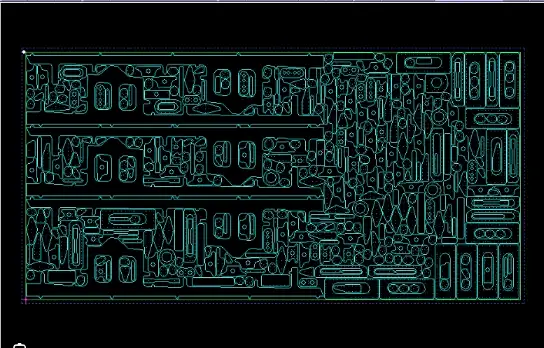
#3 Extend Your Market
You can increase your profits by reaching out to new clients and entering new markets. You can expand your horizons in the custom sheet metal industry by:
- Find new industries: Search for industries that use sheet metal and benefit from your service. You could look at sectors such as aerospace, automotive, or construction. Understanding their needs and how you can help them is essential.
- Diversify your Product Offering: Consider diversifying the sheet metal products you offer. This could involve investing in technology or machinery to allow you to produce more items. You can reach a wider audience by offering more options.
- Geographic expansion: Expand your market beyond what you are currently doing. It could mean going to other regions or internationally. Before expanding, you should understand the markets, logistics, and cultural differences in new areas.
- Online presence: Create a solid online profile to reach a larger audience. It is essential to have a professional site, active social media accounts, and an online shop. Online marketing can increase your reach and bring in customers from all over the world.
- Partnerships and Networking: Join professional associations and attend industry trade shows. Relationships with other businesses may lead to partnerships, referrals, and new projects. To offer customers complete solutions, consider strategic alliances.
- Market Research: Conduct regular market research to identify trends, better understand your customers’ needs, and discover new opportunities. You can stay on top of trends and adjust your business strategy according to the changing market conditions.
- Customer feedback: Listen carefully to what your customers say about other products or services they need. They can give you valuable insight into new markets and applications for your sheet-metal products.
- Specialization and Customization: Offer customized products or specialize in niches that are in high demand but not widely accessible. This will attract clients who are looking for something that you only offer.
- Adapt & Innovate: Be willing to change your business model, products, or marketing strategies to meet market demand. Innovation is the key to staying relevant and appealing to new customers.
#4 Embrace Technology
To remain competitive and increase efficiency, you must embrace technology. How integrating the newest technological advances can boost your business
- Automated Machines: Investing in CNC (Computer Numerical Control) machines capable of precision cutting, bending, and assembly. Automation increases productivity, reduces errors, and allows complex designs which would be impossible to create manually.
- Software Solution: Use CAD (Computer Aided Design) and CNC (Computer Aided Manufacturing) software to improve design and manufacturing processes. These tools enable more accurate design, better planning, and fewer errors. As mentioned previously, nesting software is essential for optimizing materials.
- 3D-Printing: Use 3D printing for prototypes or to produce complex components. This technology reduces the lead time and costs of creating prototypes and allows for more innovative design solutions.
- AI and Machine Learning: Use machine learning for quality control, scheduling, and predictive maintenance. These technologies analyze data to predict when machines require maintenance before they fail. This ensures continuous production.
- Inventory Systems: Use advanced inventory management software to track products and materials. It can reduce waste, prevent production delays, and predict when to order materials.
- Robotics: Use robots to perform repetitive or dangerous work. They are more efficient, have a lower risk of injury, and can perform tasks more precisely than manual workers.
- ERP System: Enterprise Resource Planning Systems (ERP) integrate all aspects of an operation, including product planning, design, manufacturing, sales, and marketing. Streamlining processes improves department communication and helps in making better decisions.
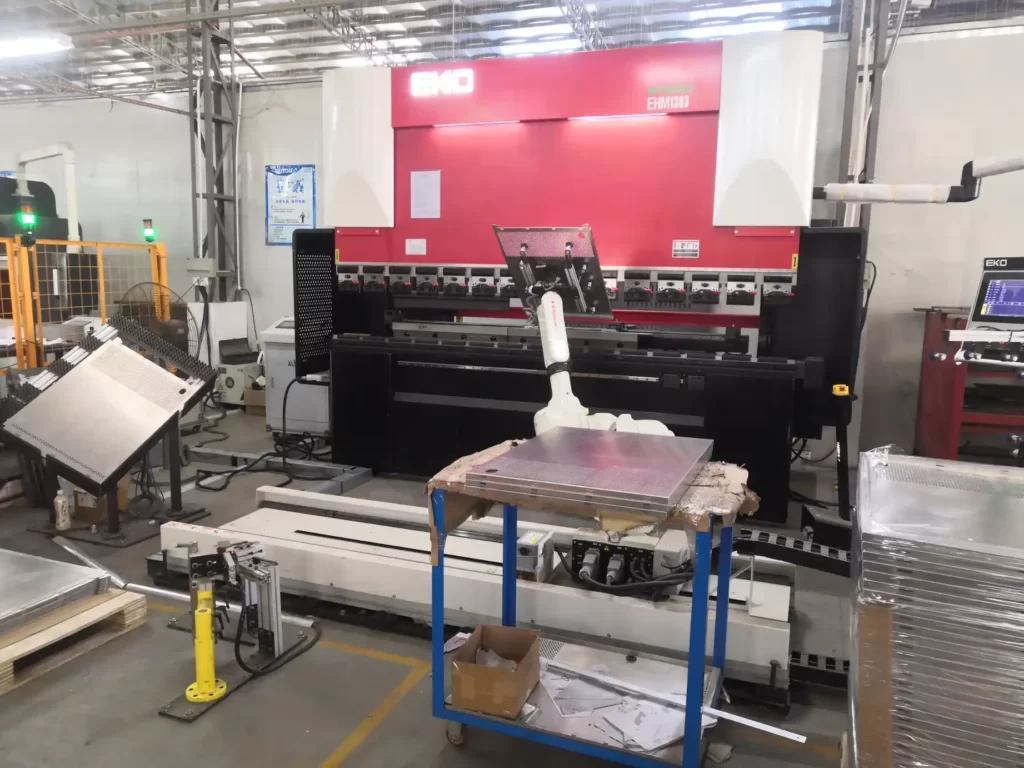
#5 Upskill your Workforce
Upskilling is an investment in your custom sheet metal workforce that will improve quality, productivity, and innovation. Here are some ways to improve your team’s knowledge and skills:
- Training Programs: Implementing ongoing training programs will keep your employees updated with the latest standards, technologies, and methods. You could offer workshops, seminars, or courses covering CNC machine operation and CAD/CAM software.
- Cross-training: Encourage your employees to learn about different aspects of production. Cross-training makes your employees more flexible and adaptable, but it also fills in any gaps that may occur during high production or absenteeism periods.
- Programs for Mentorship: Matchless experienced employees with more experienced employees. Mentorship is a great way to transfer valuable skills and knowledge. It also fosters a culture of continuous improvement and learning.
- Safety training: Ensure all workers receive safety protocols and best practice training. Safe work environments reduce the risk of accidents and increase overall efficiency.
- Quality Management Training: Stress the importance of quality throughout the entire production process. Employees should receive training on maintaining quality standards. It reduces waste and errors, resulting in higher customer satisfaction and lower costs.
- Feedback on Performance: Give regular feedback about performance. Highlight areas of strength and improvement opportunities. Constructive feedback can help employees grow, and it contributes to professional development.
- Innovation Encouragement: Encourage employees with new ideas to improve processes, products, or the workplace environment. This encourages innovation and makes employees feel valued.
#6 Focus on Quality
Quality is essential in the custom sheet metal industry, impacting profitability, customer satisfaction, and reputation. How can you ensure that your business maintains the highest standards of quality?
- Implement a quality management system (QMS): Adopt a comprehensive QMS, such as ISO 9001. It helps ensure that your products and processes are consistently high quality and that you are meeting regulatory requirements.
- Regular Audits of Quality: Conduct audits regularly to ensure your products and processes meet the required standards. Audits can help you identify areas of improvement and stop quality problems from reaching your customers.
- Use High-Quality Material: Using superior materials can improve the quality of a final product. You should only use materials from reputable vendors and inspect them upon arrival to ensure they meet your quality standards.
- Precision Maintenance and Equipment: Use the latest, most precise equipment to cut, bend, and assemble sheet metal. Maintain and calibrate your equipment regularly to ensure it operates at its peak efficiency and accuracy.
- A Skilled Workforce: Make sure your employees are adequately trained and competent. Skilled employees are less likely than others to make mistakes, and they produce better work. Encourage a pride in craftsmanship culture.
- Customer feedback: Actively solicit and respond to the customer’s feedback. Understanding your customers’ expectations and experiences can help you maintain high standards and make improvements.
- Continuous improvement: Adopting a culture of continual improvement by using methods like Six Sigma and Total Quality Management. Encourage your employees to look for ways to enhance products and processes constantly.
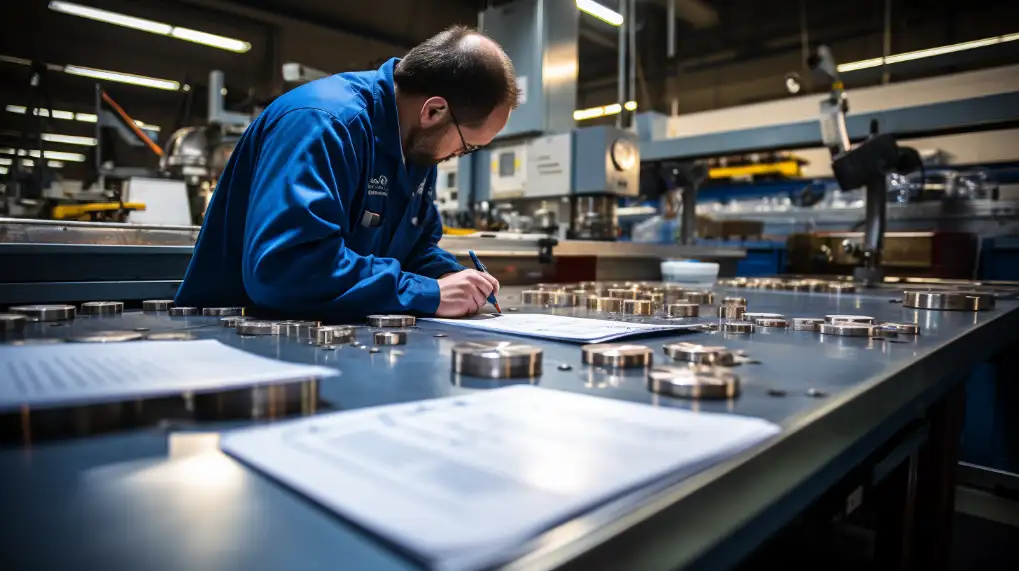
#7 Lean Inventory Management
Lean inventory management involves maintaining the correct stock balance to meet customer demands while minimizing waste, storage costs, and unused capital. Lean inventory management can significantly impact your profitability and efficiency in the custom sheet metal industry. Here are some critical strategies for lean inventory management:
- Just in Time (JIT), Inventory: Adopt a JIT (Just-In-Time) system, ordering and receiving materials only as required for production. It reduces storage costs and minimizes the need for inventory.
- Accurate Forecasting of Demand: Use historical information, market trends, and customer feedback to predict future demand accurately. This allows you to plan your inventory requirements more accurately and ensures you have enough stock to meet demand.
- Supplier Relationships: Develop strong relationships with reliable suppliers who can offer quick and flexible delivery schedules. JIT needs to function effectively. Reduce lead times and transport costs by using local suppliers.
- Inventory Reliability Ratio: Track your inventory turnover rate and strive to improve it. A higher turnover means you are using your inventory efficiently and reducing the cost of holding it. Review and adjust your stock levels regularly to ensure optimal turnover.
- Reduce Variability: Standardize materials and parts to reduce your inventory variety. It can help simplify production, lower costs, and make inventory management more effortless.
- Continuous improvement: Review and improve your inventory control processes regularly. Encourage employees to identify inefficiencies and brainstorm solutions. Lean is all about continuous improvement. Even small changes can result in significant savings.
#8 Build strong customer relationships
In the custom sheet metal business, fostering strong customer relationships can significantly impact your bottom line. Referrals and repeat business are essential. Here are some ways to build and maintain strong relationships with your clients:
- Listen to Customer Needs: Actively hear your customers and understand their specific challenges and needs. Customize your products or services to meet these needs. Build trust and loyalty by showing care and understanding of their needs.
- Consistent quality and reliability: Deliver consistently reliable products and high-quality service. You need to let your customers know that they can rely on you. Reputation for reliability and quality is a great way to keep customers and gain new ones.
- Honest and Open Communication: Maintain open lines of communication. Inform your customers as soon as you can about any problems, delays, or changes. Transparency and trust are essential.
- Responsive Service: Make sure that your service is helpful and responsive. Train your staff to handle inquiries and problems professionally and efficiently. A quick and effective resolution can transform a potentially harmful experience into a positive one for the customer.
- Loyalty Programmes: You should implement a loyalty program or offer incentives for repeat customers. This will encourage your customers to do business with you again and attract new ones.
- Value Added Services: Offer services that differentiate from your competitors. It could be anything, from flexible payment terms to expedited delivery.
- Relationship building and Networking: Engage customers beyond transactions. Attend industry events or hold customer appreciation days. Engage with customers on social media. Creating a community for your brand will lead to better relationships.

#9 Innovation and Diversification
Innovation and diversification in the custom sheet metal industry are essential strategies to remain competitive and increase profitability. Here are some ways you can implement these strategies in your business.
- Research and Development: You can invest in R&D for the development of new products and to improve those that are already available. It could be better materials, more efficient manufacturing methods, or new product lines. Staying on top of the latest technological advances can lead to innovative solutions that better meet changing customer needs.
- Market analysis: Analyze market trends and customer feedback to identify new opportunities. Understanding changes in the industry or emerging markets will help you adapt your products and services to remain relevant and competitive.
- Product diversification: Expanding your product line to meet the needs of different customers and markets. It could be offering complementary products, focusing on different industries, or creating custom solutions to target niche markets.
- Adoption of Technology: Use new technologies to improve your products and processes. It could be new manufacturing equipment, design software, or cutting-edge materials. Staying up-to-date with the latest technologies can enhance your efficiency and offerings.
- Partnerships and Collaborations: Work with other businesses and research institutions to innovate. Partnerships give your business access to new markets, technologies, and expertise.
- Customer co-creation: Involve customers in the process of development. Their feedback and insights can help create innovative products that meet market demands. Strengthen customer loyalty and relationships through co-creation.
Conclusion
Custom sheet metal is an essential component of the manufacturing industry, distinguished by its versatility, innovations, and wide variety of applications in various industries. This field faces many challenges, including market competition, technological advancements, and fluctuations in material costs. Businesses can improve their profitability, productivity, and quality by strategically addressing the challenges. This includes focusing on efficient operations, employee training, technology investment, and strong customer relations.
Do you need a reliable sheet metal parts manufacturer? Shengen is the place to go. We specialize in sheet metal laser cutting, bending, surface finish, and sheet metal welding. We place a high priority on establishing trust, maintaining standards of quality, providing competitive prices, and guaranteeing timely delivery. Reach out to Shengen Today and seek help from professionals!
FAQs:
What is custom sheet metal fabrication?
Custom sheet metal fabrication involves cutting, bending, and assembling metal components and structures. This involves the creation of parts, structures, or products by specific designs and specifications supplied by customers or as required for specific applications.
What is the impact of technology on the sheet metal industry today?
Technology is transforming the industry, improving safety, precision, and efficiency. Innovative technologies include CNC machining and laser cutting. Robotics and advanced design and management software are also available. These technologies enable more complex designs and faster production at lower costs.
What are the challenges faced by the sheet metal industry today?
The challenges include maintaining profitability despite fluctuating materials costs, adopting new technology, shortages of skilled workers, global competition, and regulatory compliance.
How can sheet-metal businesses increase their profits?
You can improve profit margins by optimizing materials, improving operational efficiency, adopting new technology, managing inventories smartly, cultivating strong customer relationships, and innovating products and processes.
What is the contribution of the sheet metal industry to the economy?
Sheet metal contributes to economic growth by providing materials and components for various sectors, including construction, manufacturing, and infrastructure. It supports ancillary sectors, creates jobs, and advances technology.
More Resources:
Sustainability in sheet metal fabrication – Source: Mac-tech
Sheet metal fabrication market study – Source: GlobeNewswire
Metal fabrication ISO standards – Source: Blackadvtech
Tools for sheet metal processing – Source: PrimaPower
Hey, I'm Kevin Lee

For the past 10 years, I’ve been immersed in various forms of sheet metal fabrication, sharing cool insights here from my experiences across diverse workshops.
Get in touch

Kevin Lee
I have over ten years of professional experience in sheet metal fabrication, specializing in laser cutting, bending, welding, and surface treatment techniques. As the Technical Director at Shengen, I am committed to solving complex manufacturing challenges and driving innovation and quality in each project.

